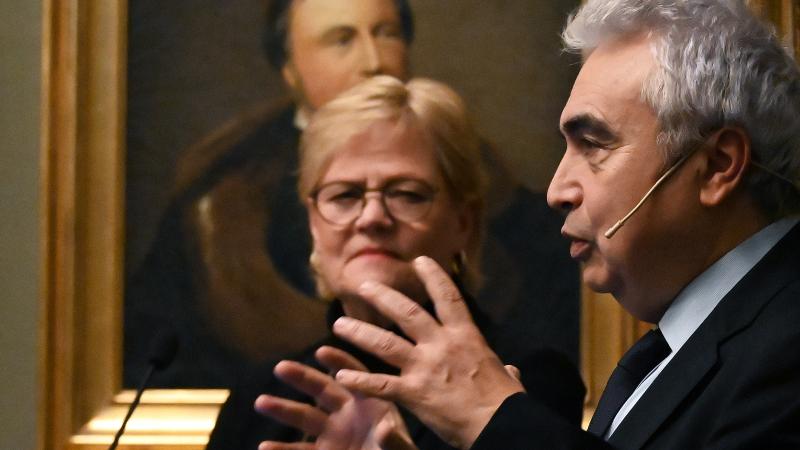
The Energy Transition: The Age of Dilemmas
The accelerating energy transition introduces critical dilemmas for societies worldwide. At its core is the question of growth: can we sustain economic expansion while cutting emissions, or does meeting climate targets require a shift toward de-growth? These challenges also present opportunities to innovate in technology and business, positioning industries to thrive in new markets.Collaboration across sectors and borders will be critical for effective decision-making. Additionally, managing competing narratives and trade-offs will challenge policymakers to assess priorities fairly, aligning public, political, and economic interests for a successful and sustainable transition.
Time: February 7th, 09:00-16:30
Place: The Norwegian Academy of Science and Letters, Drammensveien 78, Oslo
The International VISTA day is open for the public, but registration is required. Registration here
Navigating Societal Dilemmas
As we accelerate the energy transition, societies face complex dilemmas that test our ability to balance economic prosperity, environmental protection, energy security, and the diverse needs of different stakeholders. It is essential to actively involve citizens in shaping this future to avoid social unrest. With developing economies striving for prosperity, global cooperation and acknowledgment of regional disparities are essential. Additionally, fostering public support of green infrastructure, such as wind and solar farms or energy networks, requires moving beyond passive acceptance to active community engagement, using co-constructive governance to build legitimacy and long-term support. Increasing the area-footprint in general to seize virgin nature on land and at the seas is a huge concern for damaging biodiversity, -mass and -functions. Hence, another dilemma is the nature crisis that is accelerating both due to climate change and increasingly human footprints.

Navigating Industrial Dilemmas
The industrial dilemmas are easily illustrated maritime as a case. The energy transition in maritime industries will likely follow multiple pathways toward zero carbon, utilizing alternative fuels such as ammonia, methane, methanol, and biofuels, some from renewable sources (e-fuels) and others as "blue fuels" that incorporate carbon capture, utilization, and storage (CCUS). For coastal transport, batteries remain a viable option, though deep-sea shipping still relies on other sources, and nuclear power may see moderate growth over the next two decades. Rising energy costs—potentially 3-10 times higher—will drive demand for fuel-efficient innovations, including new ship designs, propulsion methods, and logistics. Achieving the green shift transition in the maritime industries and other sectors requires robust research, innovation, and leadership across industries and governments to navigate uncertainties.
Program
09:00–09:30 Registration, breakfast, and coffee
09:30–09:45 Opening by
Kjetil Taskén, vice-president of the Norwegian Academy of Science and Letters
Lise Øvreås, Chair of the VISTA board
Session 1: The big picture
09:45–10:15 Energy transition and industrial transformation by André Faaij, TNO/Utrecht
10:15–10:45 Coffee break
Session 2: Navigating Societal Dilemmas
10:45–11:15 Public acceptance: Energy, transition, democracy, and populism by Christian Klöckner,
NOTRAP, NTNU
11:15–11:45 Democratic tools for managing processes by Ines Campos, coordinator of the EU project
INCITE-DEM
11:45–12:45 Lunch buffet
Session 3: Navigating Industrial Dilemmas
12:45–13:15 Critical actions for facilitating the supply chain for low carbon fules by Bo Cerup-Simonsen,
Mærsk Mc-Kinney Møller Center for Zero Carbon Shipping
13:15–13:45 Where do we stand? by Kjetil Visnes, Director of the Norway Energy Hub, Equinor
13:45–14:15 Coffee break
14:15–14:45 Industrial opportunities and challenges for Norway by Birger Lausund, Business Policy Advisor, Fellesforbundet (The United Federation of Trade Unions)
14:45–15:30 Session 4: Panel discussion